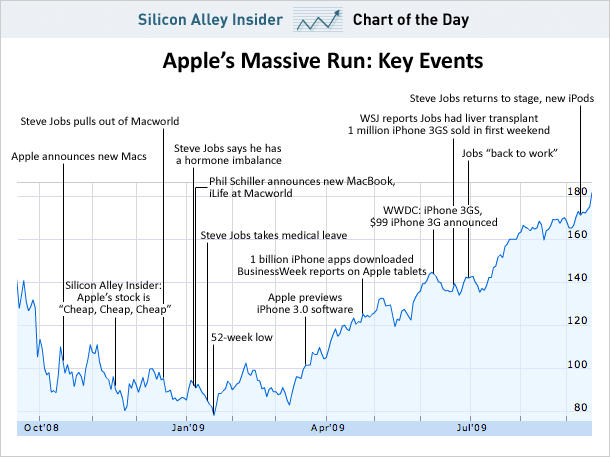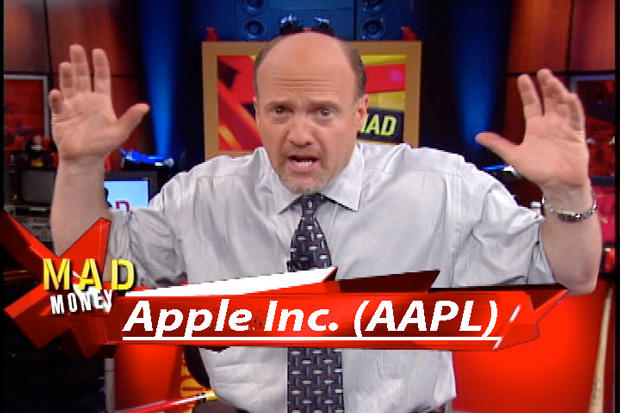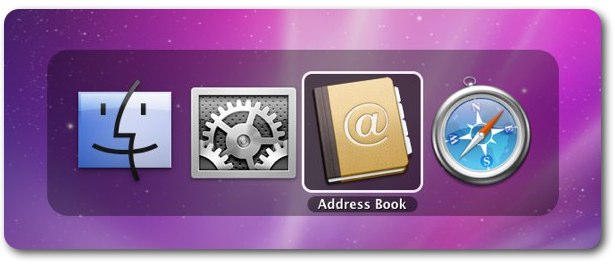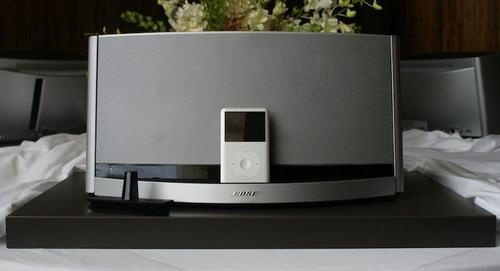This video of a slowly rotating iPhone through an X-Ray is surprisingly cool. There’s no word on where the video came from, or why it was made. Strange.
Via Just Another Mobile Phone Blog.

This video of a slowly rotating iPhone through an X-Ray is surprisingly cool. There’s no word on where the video came from, or why it was made. Strange.
Via Just Another Mobile Phone Blog.

The music industry is planning to introduce new laws that would require Apple to pay for music in downloaded movies and TV Shows — and iTunes’ 30-second song previews.
The move comes from the industry’s royalty-collection agencies — ASCAP, BMI and others — which collect royalties on music that’s broadcast or performed.
The agencies collect royalties on songs played on the radio or your local dive-bar jukebox, but say they are left out of the digital revolution. Artists are not being paid for music downloaded in movies and TV shows, or previews on Amazon, iTunes and other digital outlets, the agencies say. So they’re lobbying Congress to bring Apple and others in line with cable and broadcast outlets.
On the one hand, the agencies make a compelling point about the consumption of music. Music used to be public. It was broadcast on the radio of performed at concerts, and the industry had mechanisms for collecting royalties on this. But now music is private. It’s loaded onto iPods and played through computers — but there’s no mechanisms for monetizing these new consumption patterns.
“This is really a fight about the future,” one industry spokesman tells CNet. “As more and more people watch TV or movies over an Internet line as opposed to cable or broadcast signal, then we’re going to lose the income of the performance.”
This doesn’t sound unreasonable, but 30 second song previews? As CNet notes: “For many, this would also undoubtedly confirm their perception that those overseeing the music industry are greedy.”


Tired of wrapping your iPhone in titanium? Looking for something a bit more ‘real’ when it comes to cases? Well, you can’t get more ordinary than some cardboard and a Sharpie-looking typeface. That’s the concept behind Case-Mate’s “recession case.”
“The recession case lets you keep cash in your pocket without sacrificing on unique design for your beloved iPhone,” the company announced. The case costs $0.99 individually or a “bailout bundle”of 10 cardboard cases for $7.99.

At least it’s not shocking pink. That was my first reaction to the Pentax K-x, the updated big brother to the K2000. Maybe Pentax thought the K-x would be lost in a sea of competing black-hued cameras. Maybe the company is taking a cue from Apple, with its rainbow of iPods. Whatever the reason, once you get beyond the color issue (there are also navy blue and traditional black versions) the device does sport some interesting features.
The K-x offers photographers a 12.4 megapixel chip with a shutter firing up to 24 frames-per-second. Along with face-recognition and other usual suspects, the K-x will also shoot 720p HD video, an ability not often seen on still cameras.

McDonald’s Italy just launched a new, limited-edition hamburger called the Mac. It boasts “stone baked bread, Emmental cheese, choice beef, tomato and lettuce.”
The tag line above says “Discover our new creation available from September 16.”
Don’t tell Apple, they might not like that “il Mac,” as it’s called in Italian in exactly the same way as the computer, is ready for speedy, cheap consumption.
Tasty.

We lead today’s parade of Apple bargains with a MacBook Pro laptops starting at $780. AT&T again has sales on refurbished iPhone 3Gs, starting at $49. Also, MacMall has a 75 percen blowout on Apple software and accessories.
For details on these and other items (like Apple Final Cut Express HD), check out CoM’s “Daily Deals” page.

Social browser Flock might not be everyone’s cup of tea, but it comes with some social web smarts built-in, and some of these can be put to use in cool ways.

Freelance journalist and Mac fanatic Domenico Panacea wanted to get his hands on this Philips Lumalive t-shirt with an integrated LED screen.
“Wanted” is perhaps an understatement: Panacea forked over €900 euros (about $1,300) to spend a month with the scintillant shirt.
Normally used for publicity stunts — like this one where pretty young women attract attention for an ice cream in Istanbul — the shirts have 128MB of memory that can blink out 10 minutes of text, images and animations at 40 fps. They glow for four hours at a time before needing a recharge.
(More pics and video after the jump.)

Even though there is something awkward and unattractive about laptop bags, I seem drawn to them over and over. I guess it’s because when it comes to carrying a laptop, they do the job. I have been through several at this stage, but never liked any of them. But finally I have found a bag that changes the message — Hellolulu’s Messenger Bag.
The $120 Hellolulu messenger is the ultimate laptop bag. There is nothing cumbersome about this bag.

Look at this fascinating graph of Apple’s rollercoaster stock price over the last year, charted against major news events, courtesy of Silicon Valley Insider’s Chart of the Day.
The low point was last winter, with investors spooked about global economic meltdown and Steve Jobs’ unexpected medical leave. But in the last year, the stock has doubled, fueled by the run-away success of the iPhone and building ecitement about the upcoming tablet.
As SVB notes, Apple’s stock is nearing its all-time high, while Microsoft’s stock is trading at a about a third of its highest price.

What is it? It’s one of my all-time favourite Menu Bar apps, and was recently updated to work with Snow Leopard. I’m delighted to have just re-installed it after a spell of trying to live without it.
The app is called I Love Stars, and I prefer it over ever other iTunes helper I’ve tried. And I’ve tried quite a few.

AT&T is bringing Multimedia Messaging to the iPhone on September 25. But if you can’t wait ten days or so, here’s how to get it now.

Jim “Mad Money” Cramer boosted Apple’s stock last night on his CNBC show, and today it’s up 3.83% to $181.87.
Earlier in the day Apple’s stock was $182.72, Apple’s best since August 2008, just before the global economic meltdown.
This is the same Jim Cramer that told The Daily Show‘s Jon Stewart how easy it is to manipulate Apple’s stock. See the video after the jump.
In this case, Cramer seems to be sincere. Cramer pumped the stock on the prospect that changes in accounting rules will realize significantly higher quarterly revenue for Apple. At present, Apple spreads revenue from Apple TV and iPhone sales over 24 months, like a subscription. If new accounting rules come into effect, Apple will be able to report this revenue immediately.
As a result, Cramer estimates that Apple’s 2011 earnings will likely jump from $9 to $12 per share.
“I’m raising my price target on Apple,” he said during the show. He raised his price target for Apple stock from $200 to $264.
Some analysts, like the Yankee Group’s Carl Howe, have said for a long time that Apple’s subscription revenues aren’t being accounted for properly by Wall Street.
The Financial Services Accounting Board is reviewing a draft rule change after strong lobbying from Apple. The new rules are likely to come into effect in weeks.
Cramer told investors to act fast before the big funds got wise. Looks like it’s too late now.

Snow Leopard can give your Mac a 50% performance improvement when running optimized software, a developer has found.
Running a Mac Pro from 2007, programmer Christophe Ducommun compared Snow Leopard to Leopard while encoding and decoding video with his MovieGate software.
Ducommun is optimizing MovieGate to take advantage of two important new technologies in Snow Leopard: Grand Central Dispatch and OpenCL. While OpenCL allows powerful graphics processors to perform work for applications, Grand Central Dispatch takes advantage of multiple cores, distributing work among all the available cores.
Together, they apps a pretty big speed bump, according to MacBidouille, which published Ducommun’s results:
Snow Leopard
150 frame/s for encoding in MPEG-2
70% CPU load for decoding
130% CPU load for MPEG-2 encoding (ffmpeg)
Leopard
104 frame/s for encoding in MPEG-2
165% CPU load for decoding
100% CPU load for MPEG-2 encoding (ffmpeg)
Overall, the optimizations give an overall performance increase of about 50%. Ducommun’s Mac Pro is a 2.66 GHz Quad Core machine with a GeForce 8800 GT video card.

The iMac will get a design refresh in coming weeks, according to a report from Wall Street analysts, and everyone’s hoping Apple will finally add Blu-Ray.
Wedge Partners predicts the introduction of an updated iMac with “thinner, organic design, likely with smoothed or rounded edges,” reports Tech Trader Daily. Sounds like the iPhone 3GS to me. The iMac is already styled after the iPhone, and the 3GS is more rounded and organic than previous models. (The MacBook will also get a refresh, Wedge says, but design and hardware changes are likely to be minimal)
There have been rumors of new iMacs for several weeks. AppleInsider reported that an iMac release was imminent, and that the machine would get two “compelling new features.” The iMac is overdue for a refresh, according to MacRumors Buying Guide, which says the current models are 197 days old and the average period between upgrades is 220 days.
Most intriguing is whether the refresh will bring new capabilities. High on everyone’s wishlist for compelling new features is Blu-Ray — see this thread on MacRumors with 850+ comments. What could be better than adding high-def movies to Apple’s premier home machine?
Unfortunately, it’s not going to happen any time soon. Here’s why.

Big thanks to raneko on Flickr for creating this delightful video reminder of what life used to be like.
Yes kids, back in the Dark Ages, before the Coming of the Internet, your mums and dads used to use computers like this. Before your cloud-based storage and your Dropbox accounts and your Evernote applications and your mythical GDrive – before all of that, we used floppy disks.
They were awful, awful things.
This video shows you why. And also demonstrates quite nicely why, on his return to Apple after the years of exile at NeXT, Steve Jobs ditched floppy drives as soon as he possibly could. The rest is history, and in some cases, rodent cages.

We start today’s review of Apple bargains with white 13.3-inch Core 2 MacBooks for $599. After yesterday’s $600 dock/stereo on steroids from Bose, we get back to basics with a simple dock with remote control. Rounding out the day’s top three deals: a 17-inch MacBook Pro for $1,999.
For details on these and other items (like the 60 percent off deal on iPod and iPhone accessories), check out CoM’s “Daily Deals” page.

Hilarious edit of last week’s keynote. There’s a point when Phil just won’t stop saying “great” that’s just hypnotic.
Incredible

Kirikae, a free jailbreak app switcher/launcher for the iPhone, is yet another forbidden app that shows exactly how simple power features can drastically improve the iPhone user experience. With two clicks of the home button you can switch between apps while automatically backgrounding the app you leave. Kirikae was initially released on September 7, and the recent update (version svn.r49) adds more great features to an already killer app switcher.

The whole thing is here on The Joy of Tech site.

At what point does a dock become something more than a simple way shuttle tunes or recharge? If you’re Bose, the speaker people, you attach a stereo and a $600 price tag. The SoundDock 10 weighs in at 19 pounds and 10-inches.
“Bose SoundDock 10 sits a few notches above any of its stablemates,” according to Gizmodo. Although wireless, you’ll want to find a permanent spot for the SoundDock. A Bose engineer hinted at its size, describing the unit as “transportable,” as in a Chihuahua is portable; a St. Bernard is transportable.

A teardown of Microsoft’s new Zune HD reveals that’s it’s smaller, lighter and better built than the iPod touch — plus it’s got better battery life.
“Microsoft has taken a long time to get to market with this device, and the hardware shows it,” says Kyle Wiens, CEO of iFixit, which has posted details of the teardown online.
The Zune HD is getting favorable reviews. Wired.com says its the first music player to match the iPod’s wow factor. “It’s a lovely industrial design, has a beautiful OLED screen, packs in HD radio and HD video out, and syncs to software that outshines iTunes in many ways,” Wired.com says. However, there’s almost no Apps in Microsoft’s App Store, no deep catalog of video, oh, and the biggie: no Mac software.

If you follow the Apple rumor mill, you know that most of the interesting leads come from China or Taiwan where case and parts manufacturers are way ahead of the game.
Here’s another one: Taiwan Economics News, a website specialized in giving the skinny on who is making what in Taiwan, reports that a couple of PC parts and component suppliers have won the Apple tablet contract.
What will they be making?
A tablet PC with a 9.6-inch screen, finger-touch function and built-in HSPDA (high speed download packet access) module with a a P.A. SEMI processor chip and long lasting battery pack, selling for between US$799 and US$999.
Apple insider speculates that HSDPA means the device would work with the AT&T 3G network in the U.S., much like the current iPhone, debunking earlier speculation that the device would run on Verizon’s network.
I dunno. Having once worked as an entertainment reporter, gossip can be fun for awhile, but show me the tablet, people.

If you’re still looking for a deal on previous-generation iPod nanos, the Apple Store is making way for the latest versions of the popular MP3 player. Apple also has MacBook Pro laptops starting at $999 and MacBook Airs for $1,099.
For details on these bargains and more (like the NanShield), check out CoM’s Daily Deals page.

A man describing himself as an “82-year-old antique” is putting a relatively young 32-year-old Apple I for sale on eBay in the next few weeks.
One of 200 computers hand made by Steve Wozniak, somewhere between 30 and 50 are thought to be still around. (If you’re more interested in seeing one than buying one, the Smithsonian has an Apple I on display as it’s being presented to the Homebrew Computer Club in Palo Alto).
Back in July 1976, the Apple I sold for $666.66. The computers, sold in a kit, came with 4KB standard memory, that you could bump up to 8KB or 48KB with expansion cards. You had to add your own case, keyboard and display.
Guesstimates say the computer could fetch between $14,000 and $16,000.
The seller wrote in to San Francisco Chronicle tech columnist David Einstein about how he might get publicity for the sale.
Einstein replied, “I don’t think your computer is valuable enough to spark much general media interest before you sell it.”
Alas, he underestimated the Cult of Mac. Mr. Antique, we want to hear from you!